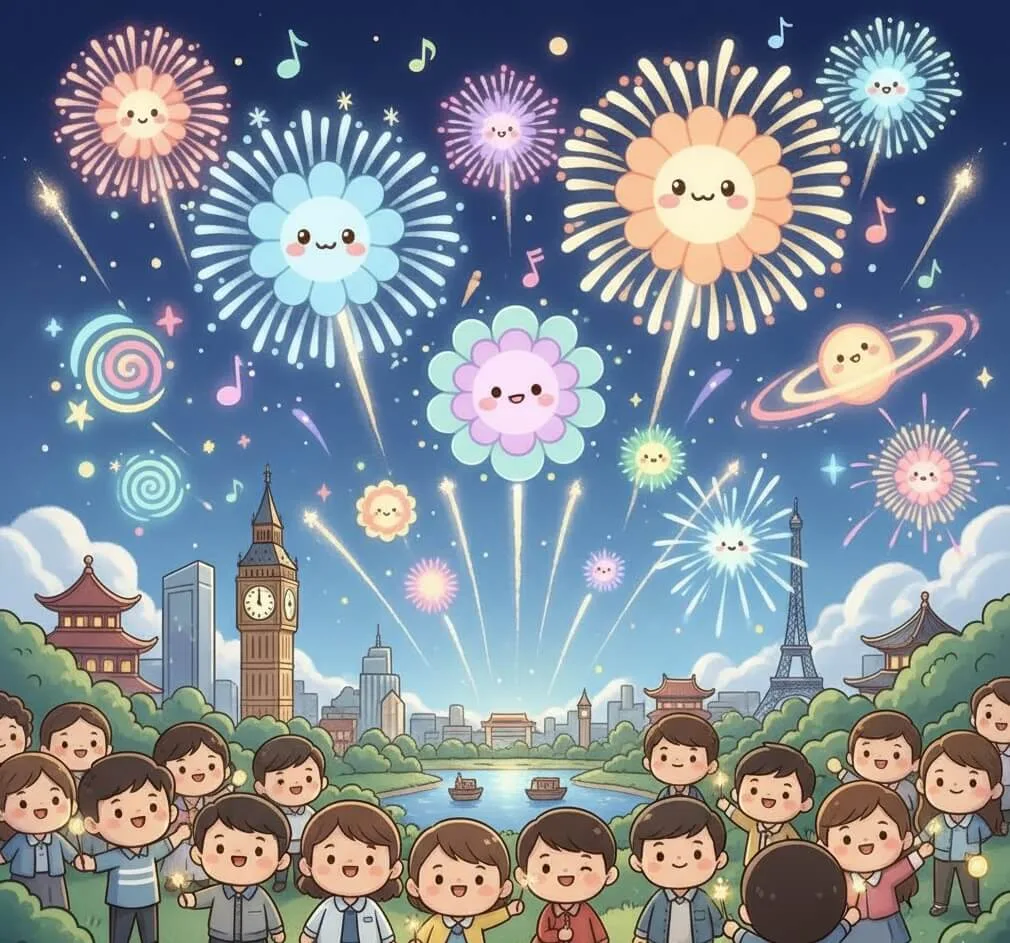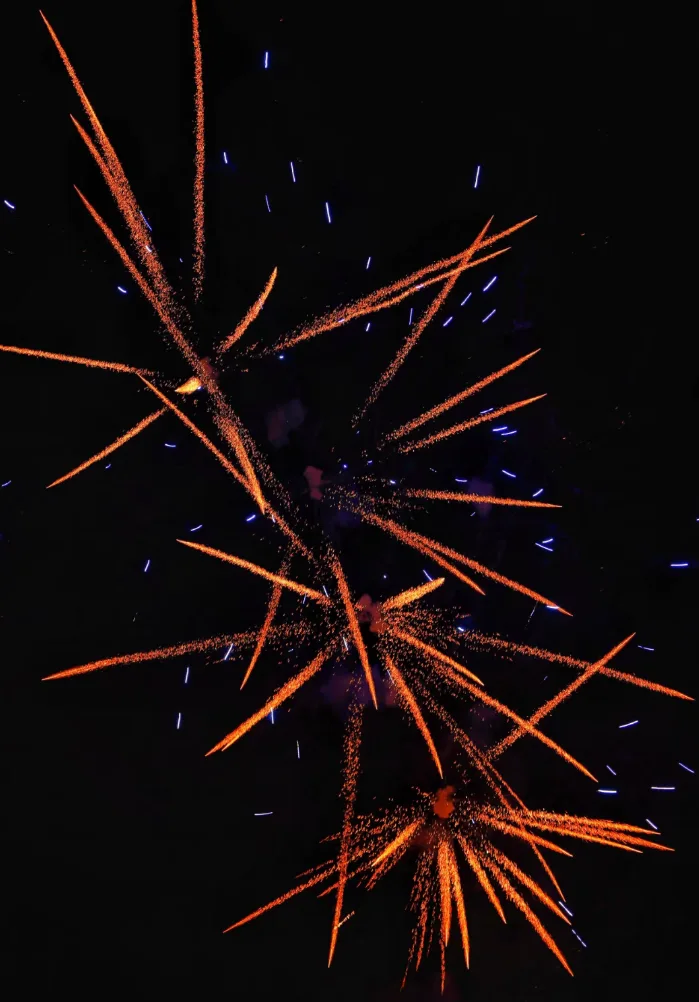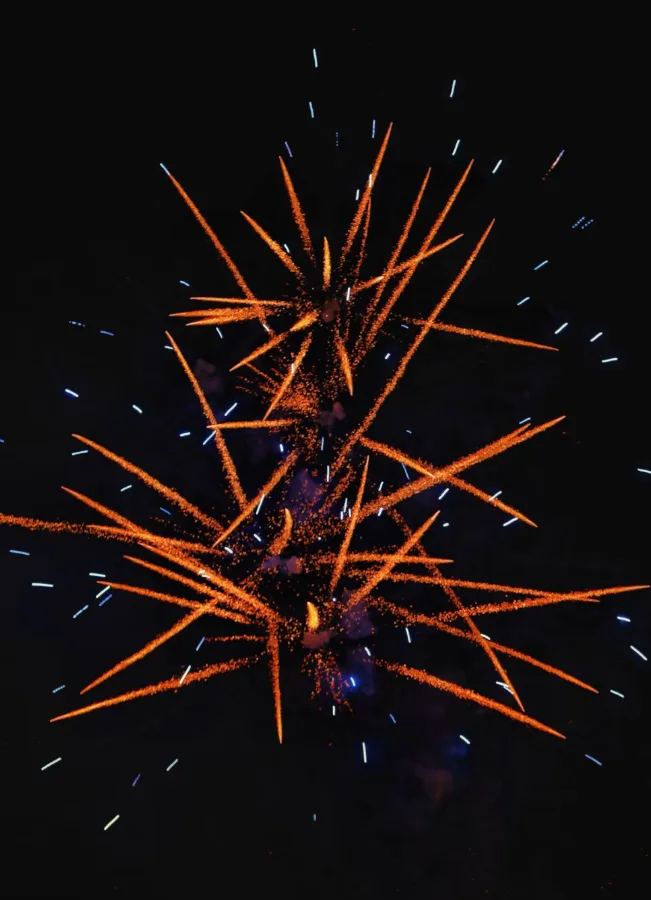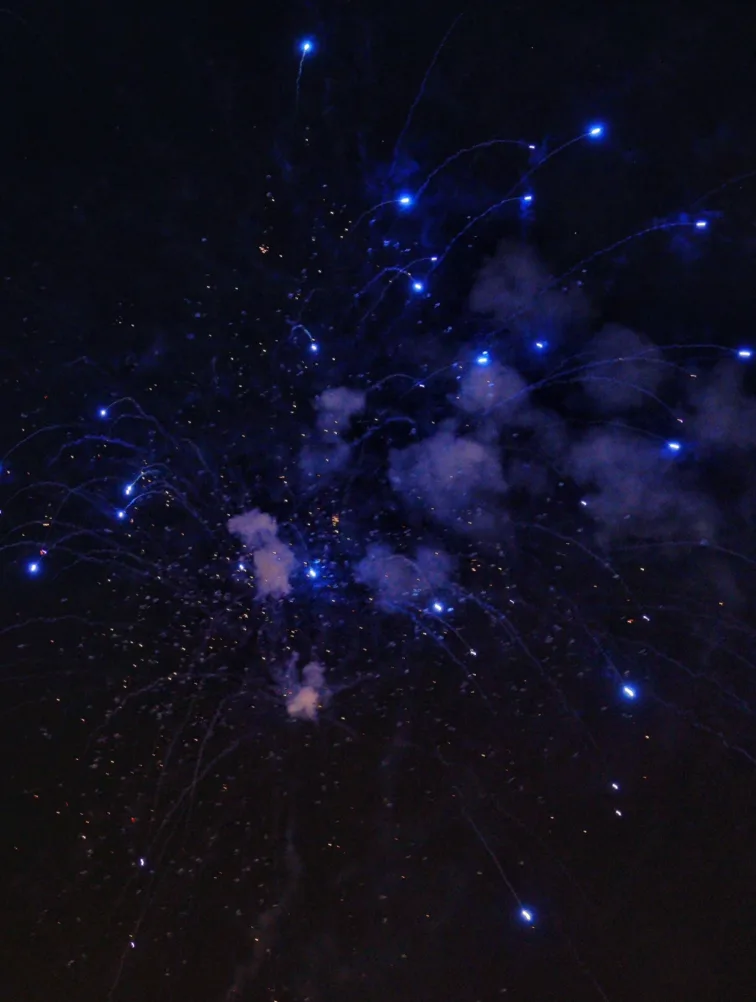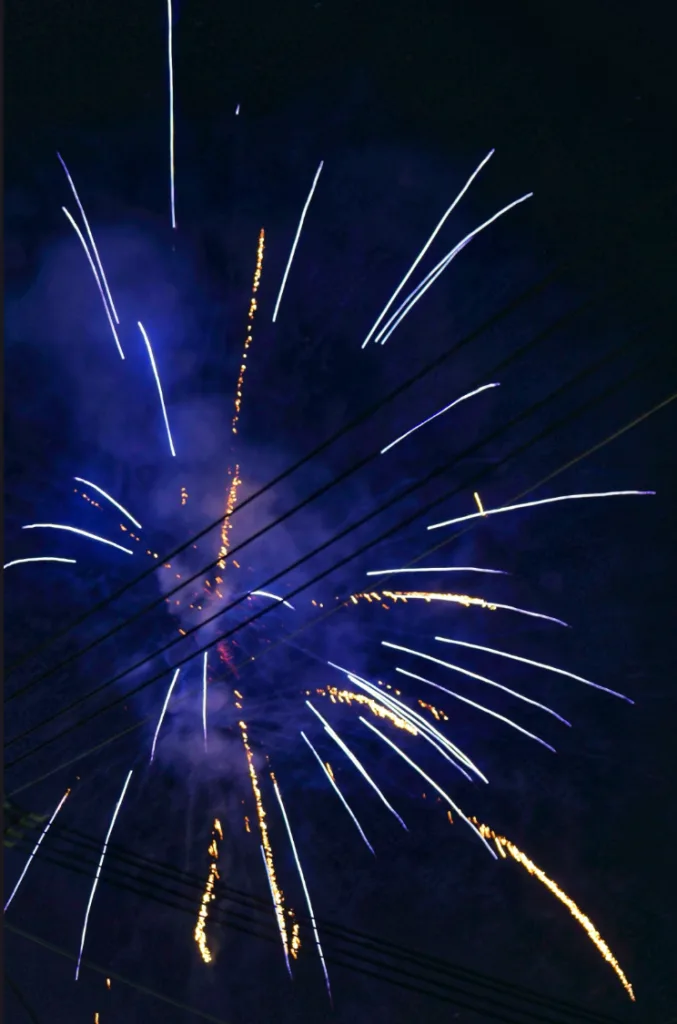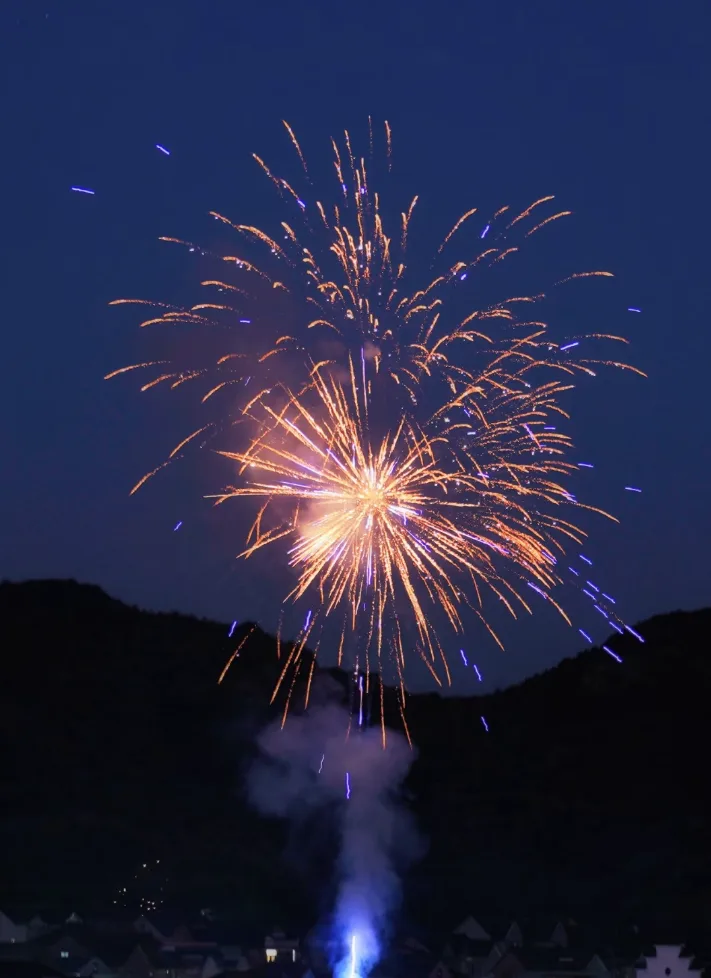The Genesis: Bamboo Crackles and an Accidental Discovery in Ancient China
Fireworks, a visual spectacle transcending time and culture, have their historical roots deeply embedded in ancient China. The origin of this magnificent art did not start with complex chemical recipes but with simple, ceremonial needs.
The earliest precursor to gunpowder was the natural phenomenon of Bamboo Cracking. As far back as the 2nd century B.C., the Chinese discovered that tossing fresh bamboo stalks into a fire would cause the hollow chambers inside to explode due to thermal expansion, creating a loud noise. The initial use of these natural "firecrackers" was not for entertainment but was steeped in the superstition of warding off evil spirits. Historical accounts suggest that people believed this sudden, loud sound could frighten away malevolent forces, thereby ensuring peace and a good harvest for the New Year or important events.
The truly revolutionary breakthrough occurred between the 7th and 9th centuries A.D., during the Tang or Song Dynasties, corresponding with the invention of Black Powder. The birth of gunpowder was not initially for military application but was an accidental discovery by Taoist alchemists in their pursuit of the elixir of immortality. By mixing the three primary ingredients—Saltpetre (Potassium Nitrate), Sulfur, and Charcoal—they inadvertently created a powder with explosive properties. Historical records confirm that the earliest descriptions of this "black medicinal stone" appeared in Taoist texts, referred to as the "formula for fire-medicine."
When this gunpowder was expertly packed into bamboo or paper tubes and ignited, the earliest man-made fireworks were created. Initially, their primary function remained the production of loud noise to enhance the solemnity of religious and court ceremonies.
The Western Journey: From Military Tool to Artistic Innovation
The secret of gunpowder traveled westward slowly but surely over the following centuries via the Silk Road and trade routes. Around the 13th century, the technology first reached the Middle East and subsequently entered Europe through the Arab world and the Mongol campaigns.
In Europe, gunpowder was initially predominantly applied to military purposes. However, the visual spectacle of the substance soon captured the imagination of royalty and the nobility. Italy is widely acknowledged as the cradle of European pyrotechnic art. By the 15th century, Italian manufacturers began elevating fireworks from mere noise-making to an elaborate art form, designing complex displays for royal festivities, religious holidays, and public celebrations. They were among the first artisans to systematically incorporate various projectiles and propellants to create specific patterns and trajectories in the night sky.
However, the true leap in firework color occurred in the 1830s. With the maturation of chemical science, Italian chemists successfully introduced metallic salts into the gunpowder mixtures. Before this, fireworks were largely limited to monochromatic orange and yellow flares. It was the precise use of oxides and chlorides of metallic elements such as Strontium, Barium, Copper, and Sodium that allowed fireworks to display the rich, pure spectrum of deep reds, vibrant greens, true blues, and bright yellows. This chemical breakthrough marked the formal birth of modern pyrotechnic art.
Verifiable Heritage: The Cultural Codification of Fireworks
The enduring success of fireworks globally lies in their deep cultural permeability. They have transcended the technology itself to become vehicles for human collective memory and historical narrative.
Lunar New Year: In East Asia, the use of fireworks holds the most direct and ancient cultural link. The sounds and lights symbolize warding off old misfortunes and welcoming new blessings—a custom verifiable through millennia of continuous practice.
Independence Celebrations: In Western nations, such as the United States' July 4th and France's July 14th (Bastille Day), fireworks have been recodified as a visual declaration of freedom, sovereignty, and national spirit. The formalization of this custom began after national independence and revolutionary victories, serving as a vital cultural emblem in the formation of modern nation-states.
The Beauty of Impermanence (Mono no Aware): In Japanese culture, fireworks (Hanabi, meaning "fire flowers") are viewed as a philosophical art form, often held during summer festivals. Literature and artworks depict Hanabi as a profound expression of life's impermanence and transient beauty, reflecting a unique cultural understanding of aesthetics and existential meaning.
From the accidental findings of alchemists to the precise formulas of chemists and the stage designs of pyrotechnicians, every step of firework history clearly documents humanity's mastery of fire, pursuit of color, and desire for collective joy. The firework is an immense yet momentary epic written on the night sky's canvas throughout the history of human civilization.

